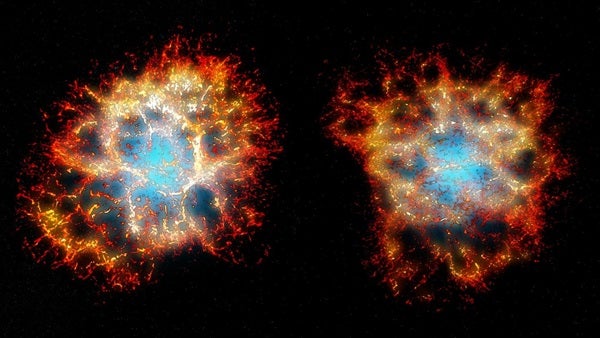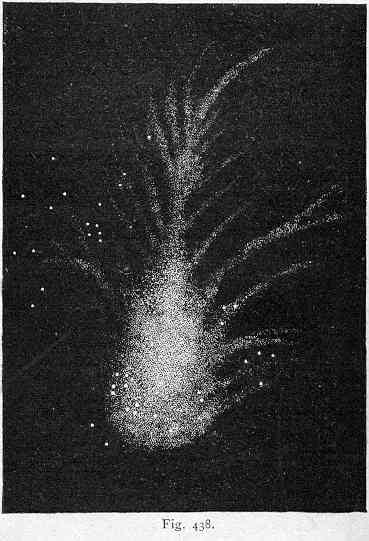In stunning 3D
Researchers generated the new view using the Spectromètre Imageur à Transformée de Fourier pour l’Etude en Long et en Large de raies d’Emission (SITELLE) instrument on the 3.6-meter Canada France Hawaii Telescope (CFHT) on Mauna Kea. Their reconstruction shows the Crab in exquisite detail from every angle, allowing viewers to zoom in and around the structure. The most striking feature is the remnant’s delicate lattice of gas filaments, which crisscross each other like a honeycomb.
The work was published January 18 in Monthly Notices of the Royal Astronomical Society.
Evolving view
Although light from the explosive supernova that created the Crab — which sits about 6,300 light-years away — reached Earth in A.D. 1054, the nebula itself wasn’t discovered until 1731. (Twenty-seven years later, it became the first entry in Charles Messier’s list of “not-comets.”)
Its name comes from an 1844 drawing by William Parsons, the Third Earl of Rosse, who studied the nebula through a 36-inch refractor. His depiction included a long “tail” that gave the object the appearance of a horseshoe crab.
Since then, however, our view of the Crab has steadily improved. Case in point: the CFHT that collected the data for this 3D simulation has nearly 16x the light-gathering power of Parsons’ telescope. And even before this, views of the Crab with larger, better instruments — starting with Parsons’ return to the Crab with a 72-inch telescope in 1848 — yielded increasingly accurate images that often left amateurs wondering: “Just where is the crab in the Crab?”











